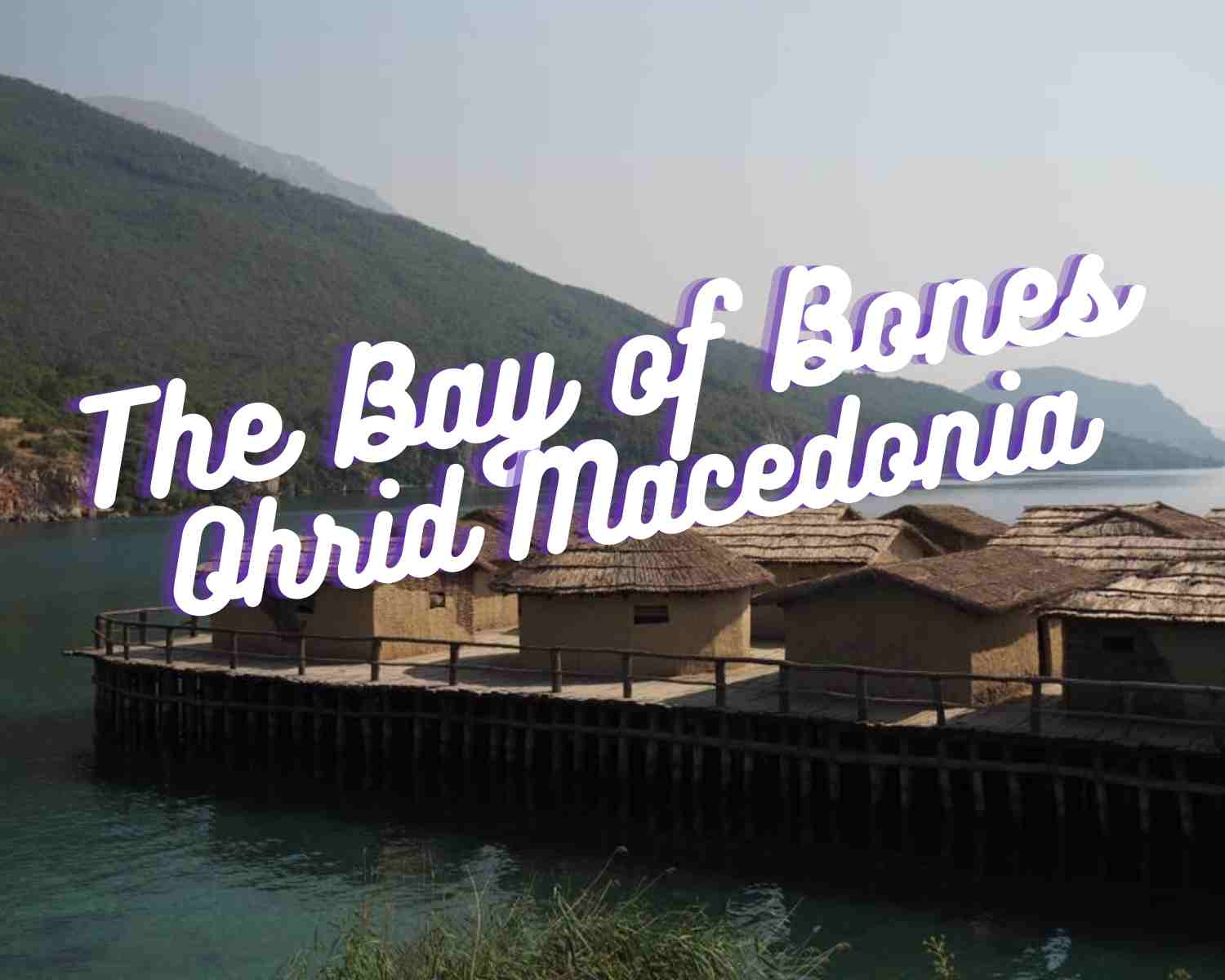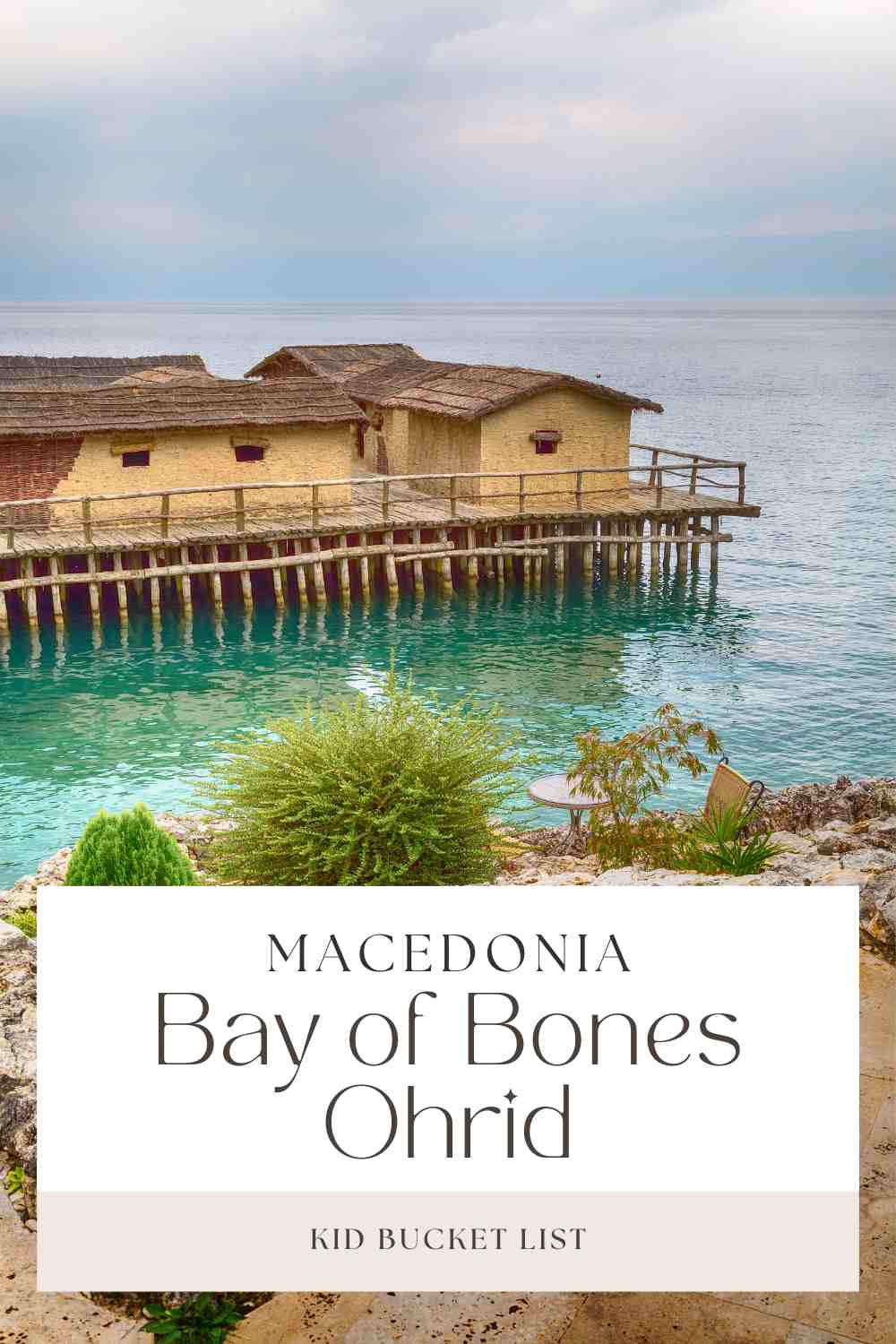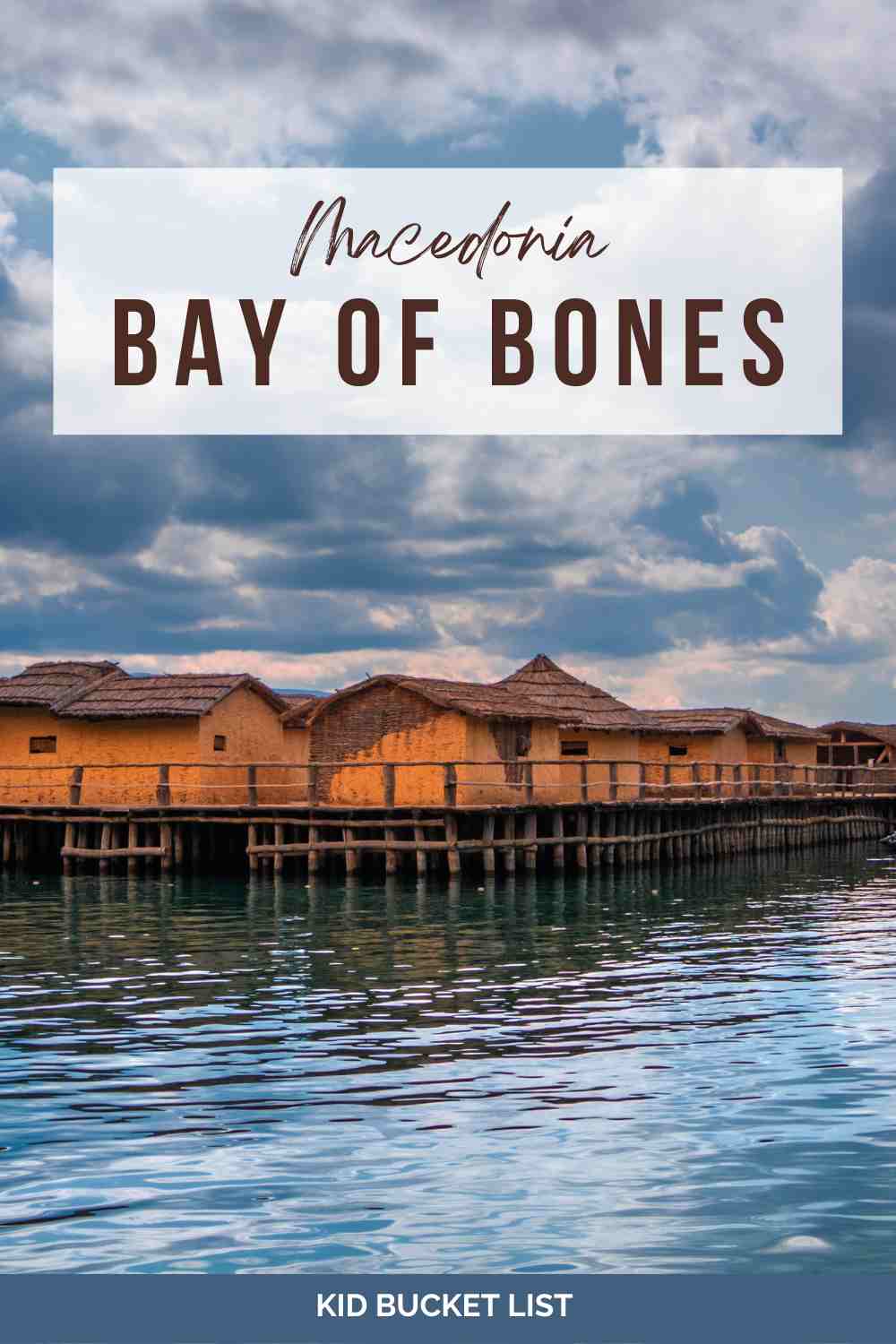As absolute history buffs, we could not pass up the opportunity to visit the Bay of Bones near Ohrid when we were exploring Macedonia. The Bay of Bones, also known as the Museum on Water, is a unique archaeological site situated on the southwestern shore of Lake Ohrid, one of the oldest and deepest lakes in Europe.
The Bay of Bones is a reconstructed prehistoric settlement that provides insight into the ancient culture and lifestyle of the region. A visit here provided both Sunshine and Striker a hands-on learning experience as they were able to walk around the site as if they were walking with the Encheleans.
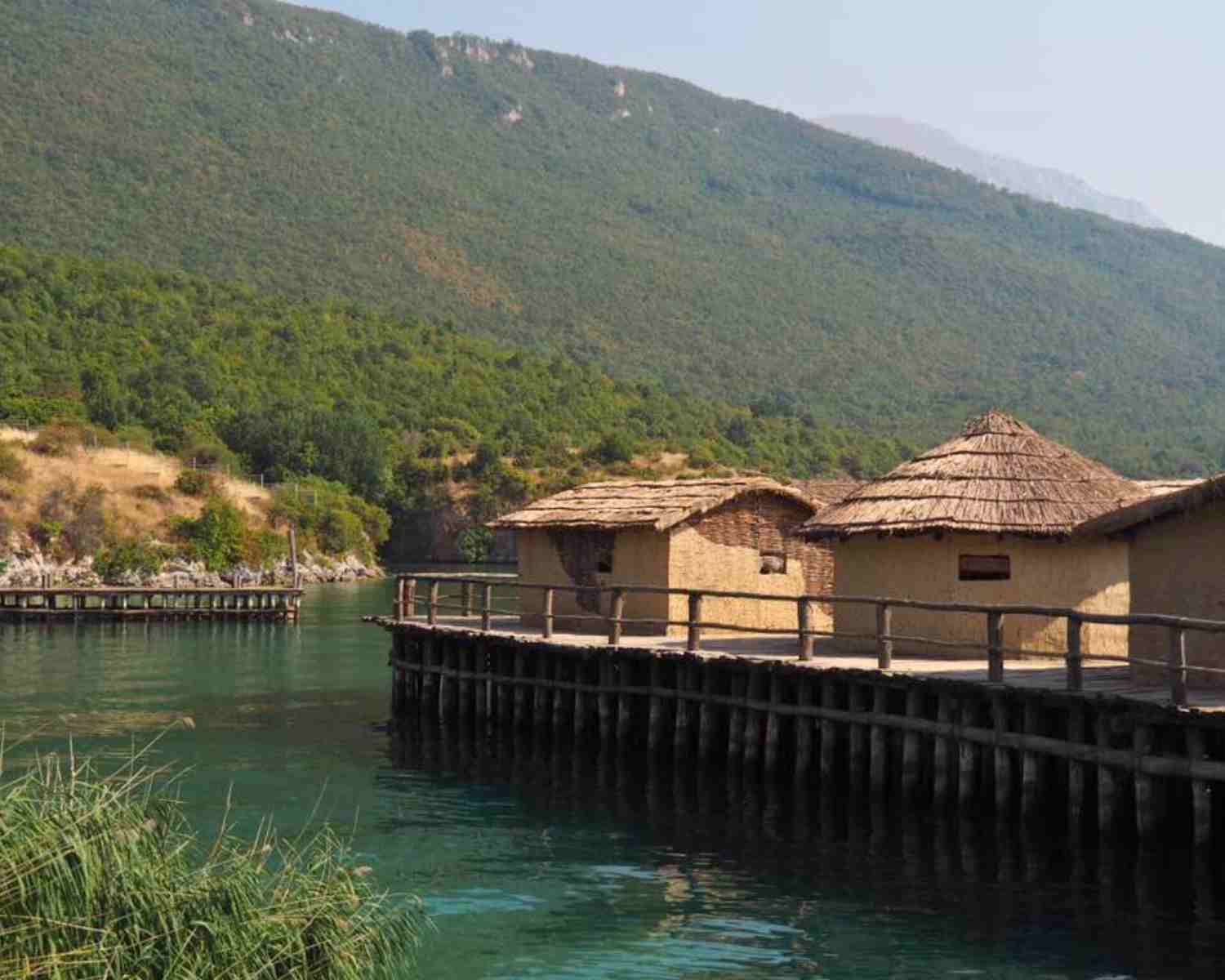
Exploring the Bay of Bones Near Ohrid
Table of Contents
History of the Bay of Bones
The original history of the Bay of Bones dates back to the prehistoric period, specifically the Bronze Age around around 1200 to 700 BC. The settlement was constructed by a people known as the Encheleans, who inhabited the area around Lake Ohrid. They were part of the wider Illyrian culture that existed in the western Balkans during ancient times.
The Encheleans built their settlement on Lake Ohrid’s southwestern shore using a unique construction technique. They erected wooden platforms supported by wooden piles driven into the lakebed. These piles served as the foundation for various structures, including dwellings, workshops, and other functional areas.
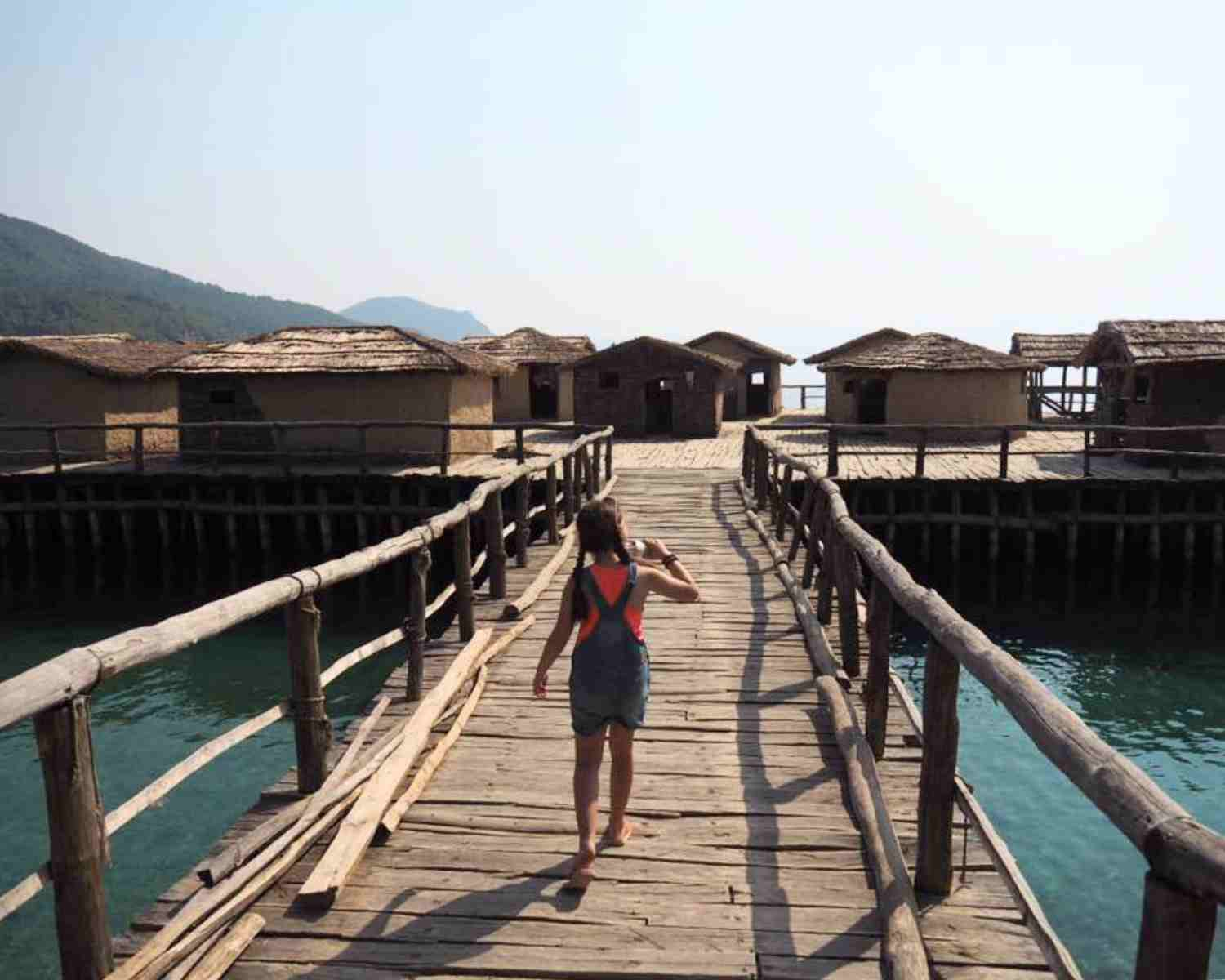
The settlement was likely a vibrant community engaged in activities such as fishing, trade, and crafts. Lake Ohrid provided a plentiful supply of fish, while the surrounding area offered resources for farming and other forms of subsistence. The Encheleans utilized the lake’s waters for transportation, trade, and communication with neighbouring settlements.
The exact purpose and nature of the settlement are still subjects of ongoing archaeological research and speculation. Some theories suggest that it may have served as a trading post or a strategic outpost, while others propose that it was a seasonal settlement used by the Encheleans during specific times of the year.
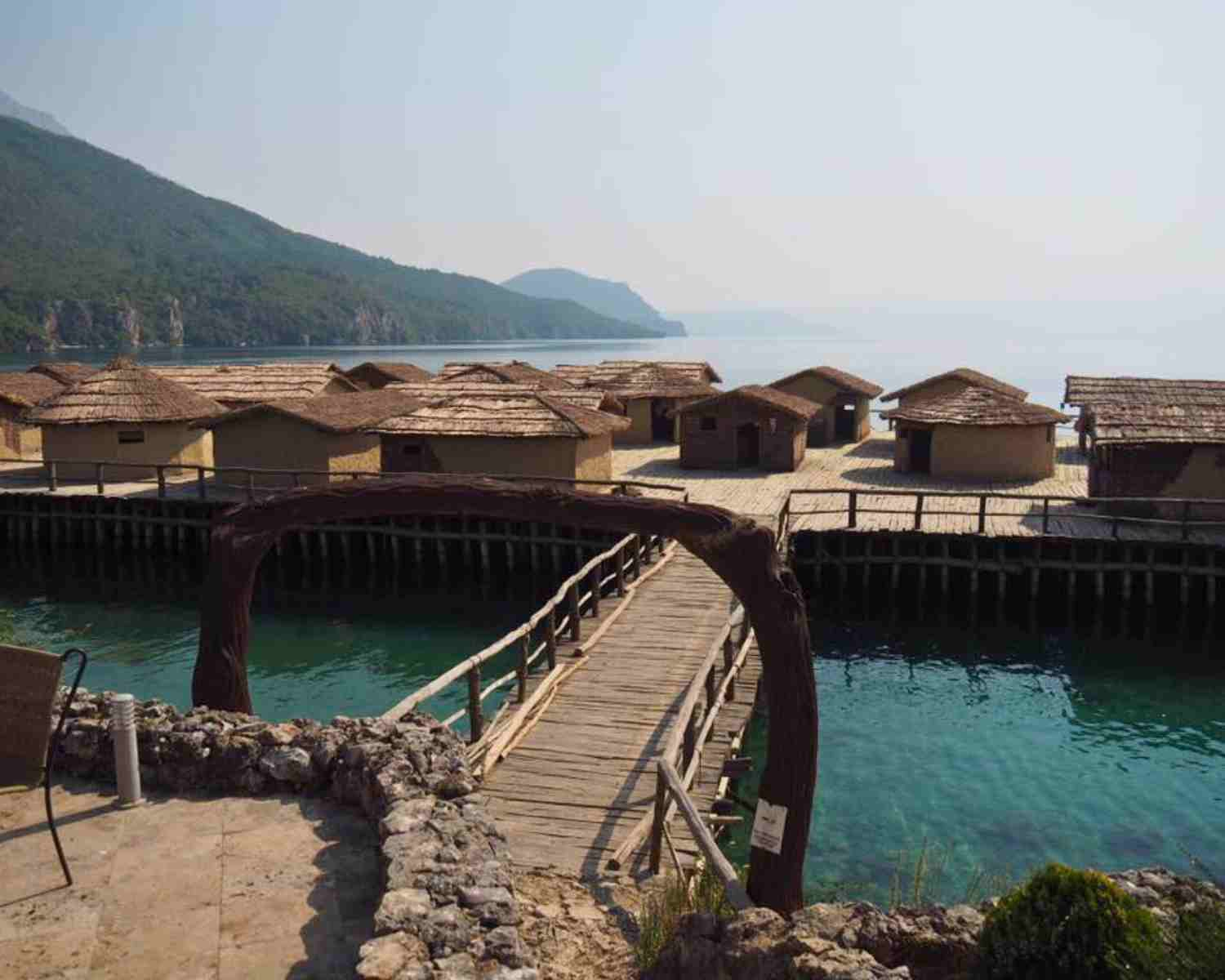
Over time, the settlement was abandoned and submerged in the waters of Lake Ohrid. Its remains were preserved underwater, and in the late 20th century, archaeologists began excavations to uncover and study this remarkable site. The findings and discoveries made at the Bay of Bones have significantly contributed to our understanding of prehistoric cultures in the region and their way of life.
Who Were the Encheleans?

The Encheleans were an ancient people who inhabited the region around Lake Ohrid and its surrounding areas in what is now modern-day North Macedonia. They were part of the wider Illyrian culture, which existed in the western Balkans during ancient times and are one of the oldest known peoples of the eastern shore of the Adriatic Sea.
The Illyrians were a group of tribes and communities that occupied parts of the western Balkans, including present-day Albania, Bosnia and Herzegovina, Croatia, Montenegro, and North Macedonia. They had a distinct cultural and linguistic identity and interacted with various neighbouring civilizations, such as the Greeks and Romans.
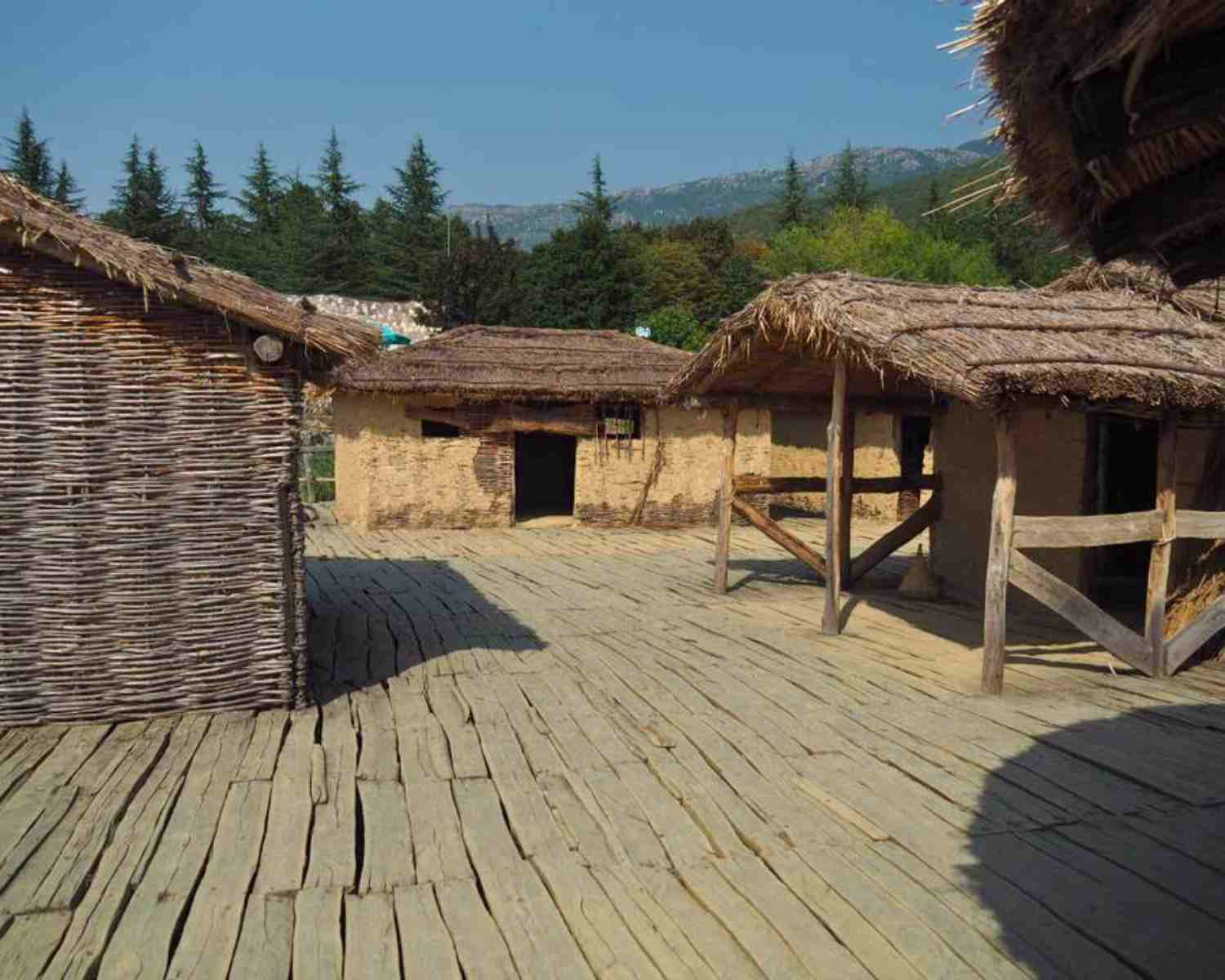
The Encheleans were one of the Illyrian tribes that occupied the area around Lake Ohrid. They left behind traces of their existence through archaeological remains and artifacts found in the region. The Bay of Bones represents one of the sites associated with the Enchelean culture.
Due to the limited historical records and the scarcity of written sources from the time, much of what we know about the Encheleans and other Illyrian tribes comes from archaeological excavations, linguistic studies, and the accounts of ancient historians and geographers. These sources provide glimpses into their social structures, cultural practices, and interactions with neighbouring peoples.
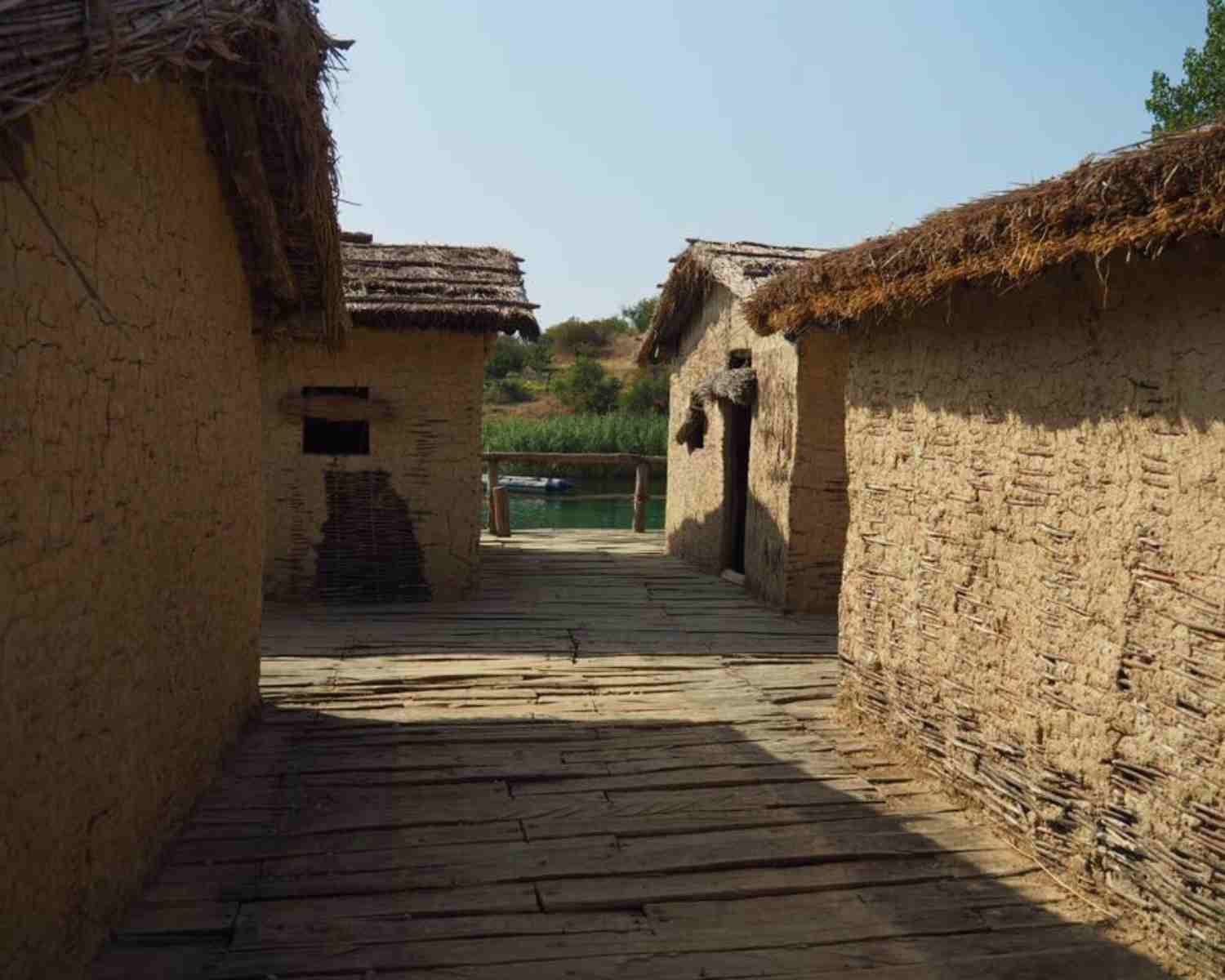
It’s important to note that the Encheleans and other Illyrian tribes were not a unified political entity but rather a collection of distinct communities and tribes. They shared certain cultural traits and likely had interactions and conflicts among themselves and with external powers.
Archeology at the Bay of Bones near Ohrid

Archaeology at the Bay of Bones near Ohrid has played a crucial role in uncovering and understanding the prehistoric settlement that existed in the area.
Archaeological excavations at the Bay of Bones began in the late 1990s under the direction of the National Museum of Macedonia. The submerged settlement was discovered by chance during a routine underwater exploration of Lake Ohrid. Since then, systematic excavations have taken place to uncover and document the remains.
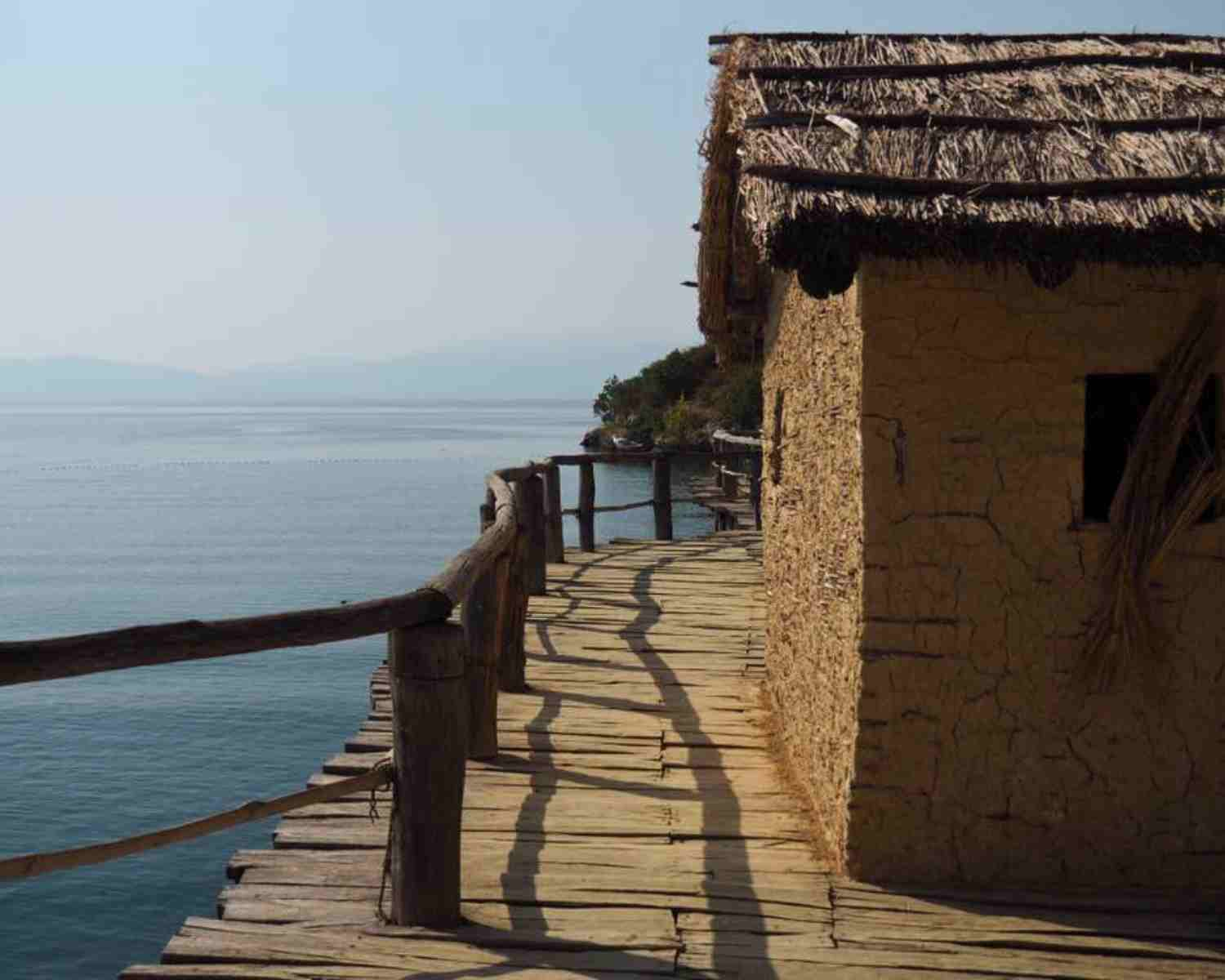
The excavations at the Bay of Bones have revealed the remains of wooden structures supported by wooden piles driven into the lakebed. The settlement comprised a series of platforms interconnected by wooden bridges, creating a network of dwellings and functional areas.
Numerous artifacts have been recovered from the underwater excavations at the Bay of Bones. These include pottery, tools, weapons, jewellery, and other items that provide insights into the material culture and daily life of the Enchelean people. The recovered artifacts have shed light on various aspects of their lifestyle, such as fishing, agriculture, trade, and craftsmanship.
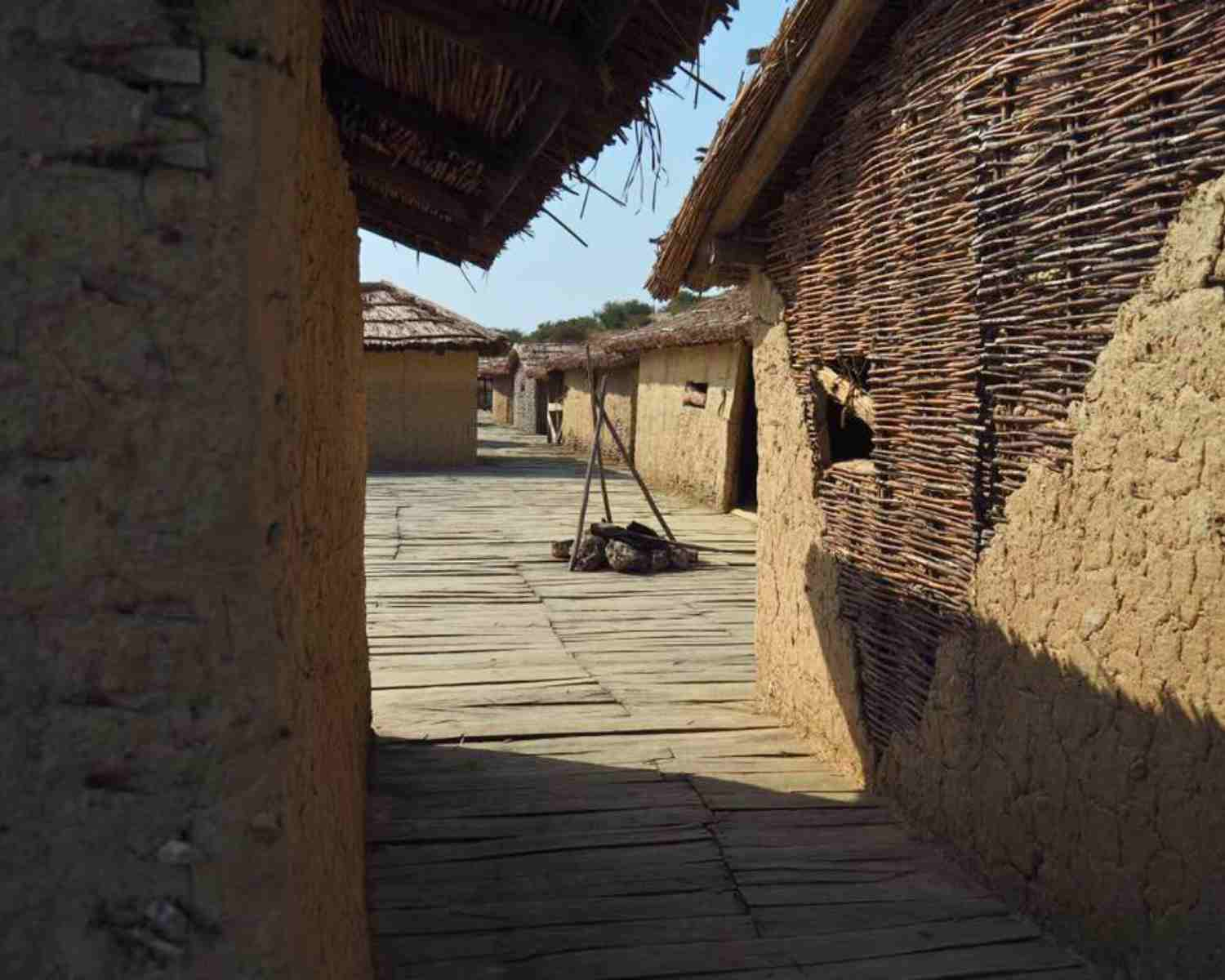
Due to the underwater nature of the site, archaeologists have faced unique challenges in preserving and protecting the excavated remains. Special conservation techniques have been employed to stabilize and protect the wooden structures and artifacts recovered from the lake. These efforts ensure the long-term preservation and accessibility of the archaeological heritage.
Archaeological work at the Bay of Bones continues to expand our knowledge of the Enchelean culture and prehistoric settlement patterns in the region. Ongoing research and discoveries contribute to a deeper understanding of the ancient inhabitants of Lake Ohrid and their historical context.
Why The Bay of Bones?
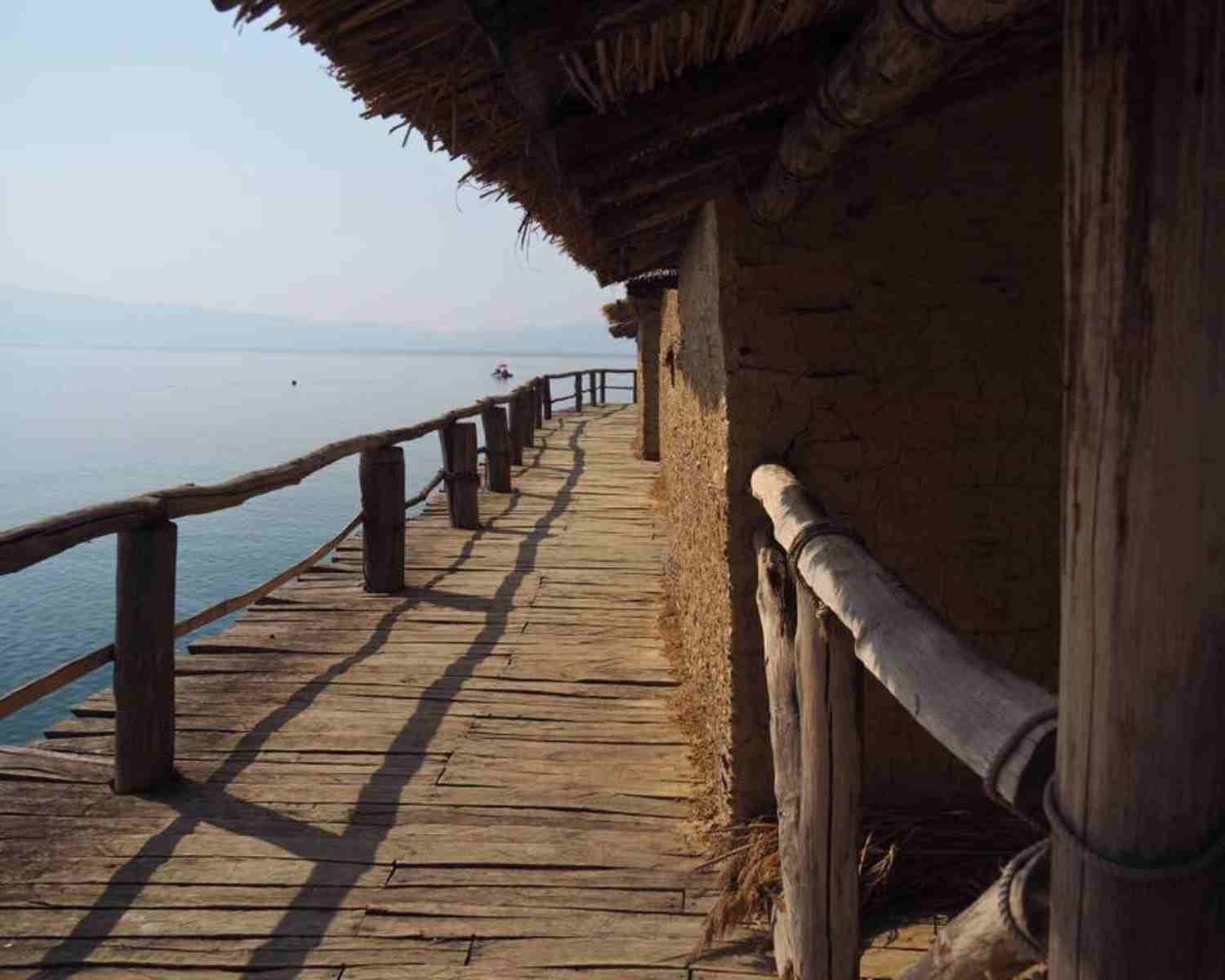
The site gets its name from the numerous wooden piles that were used to support the structures above the water. These piles create the impression that the settlement is floating on the lake, hence the name “Museum on Water.” The original settlement dates back to the Bronze Age and was built by the prehistoric people known as the Encheleans.
Exploring the Bay of Bones Today
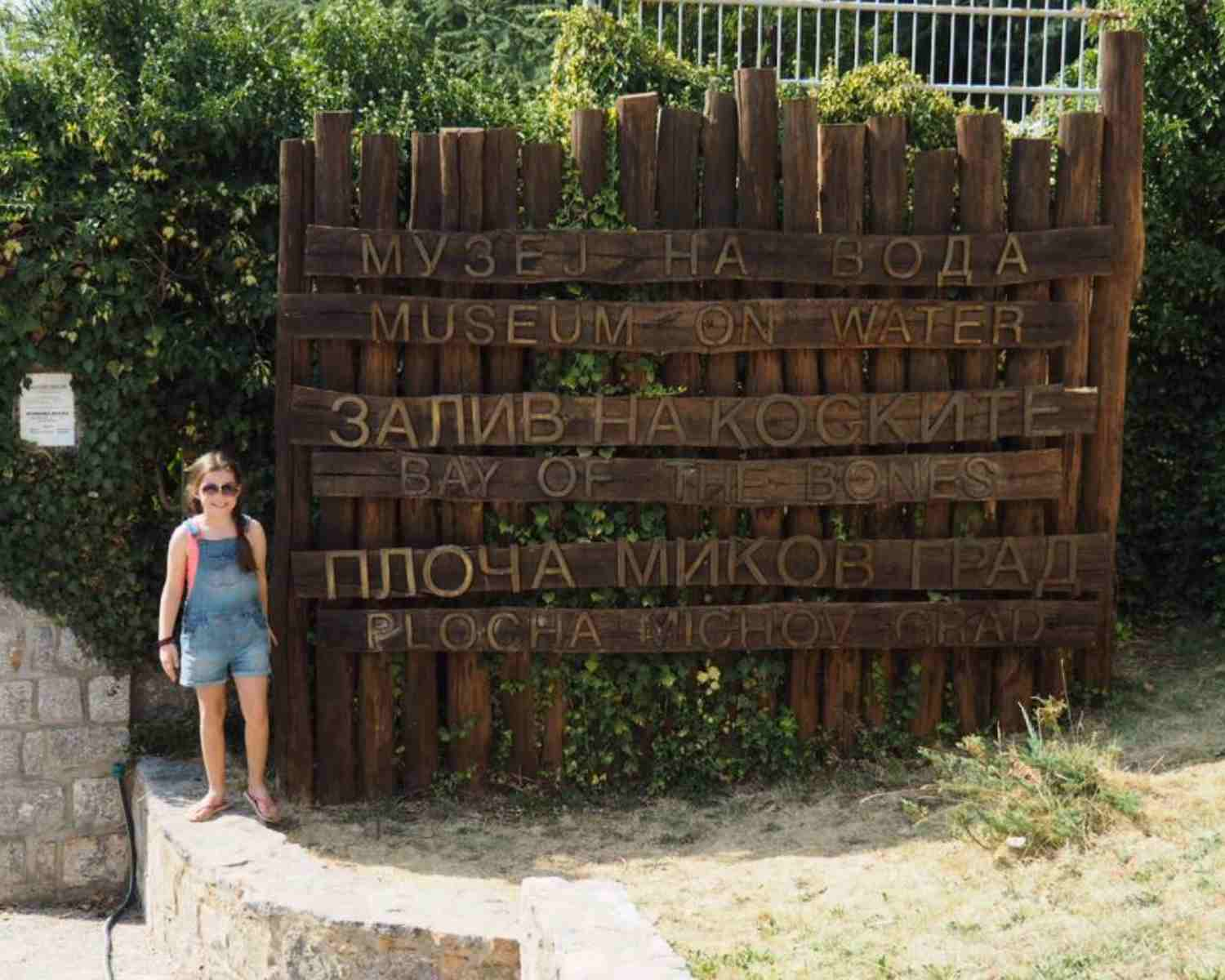
The reconstructed Bay of Bones that visitors can explore today is an interpretation based on archaeological evidence and research. It offers a glimpse into the original history and culture of the Enchelean settlement, allowing visitors to learn about the ancient inhabitants and their fascinating connection to Lake Ohrid.
The Bay of Bones offers visitors the opportunity to explore a reconstructed village consisting of a series of platforms interconnected by wooden bridges. These platforms represent dwellings, workshops, and other functional areas of the ancient settlement. The interiors of the buildings are furnished with replicas of tools, utensils, and household items that would have been used during that time.
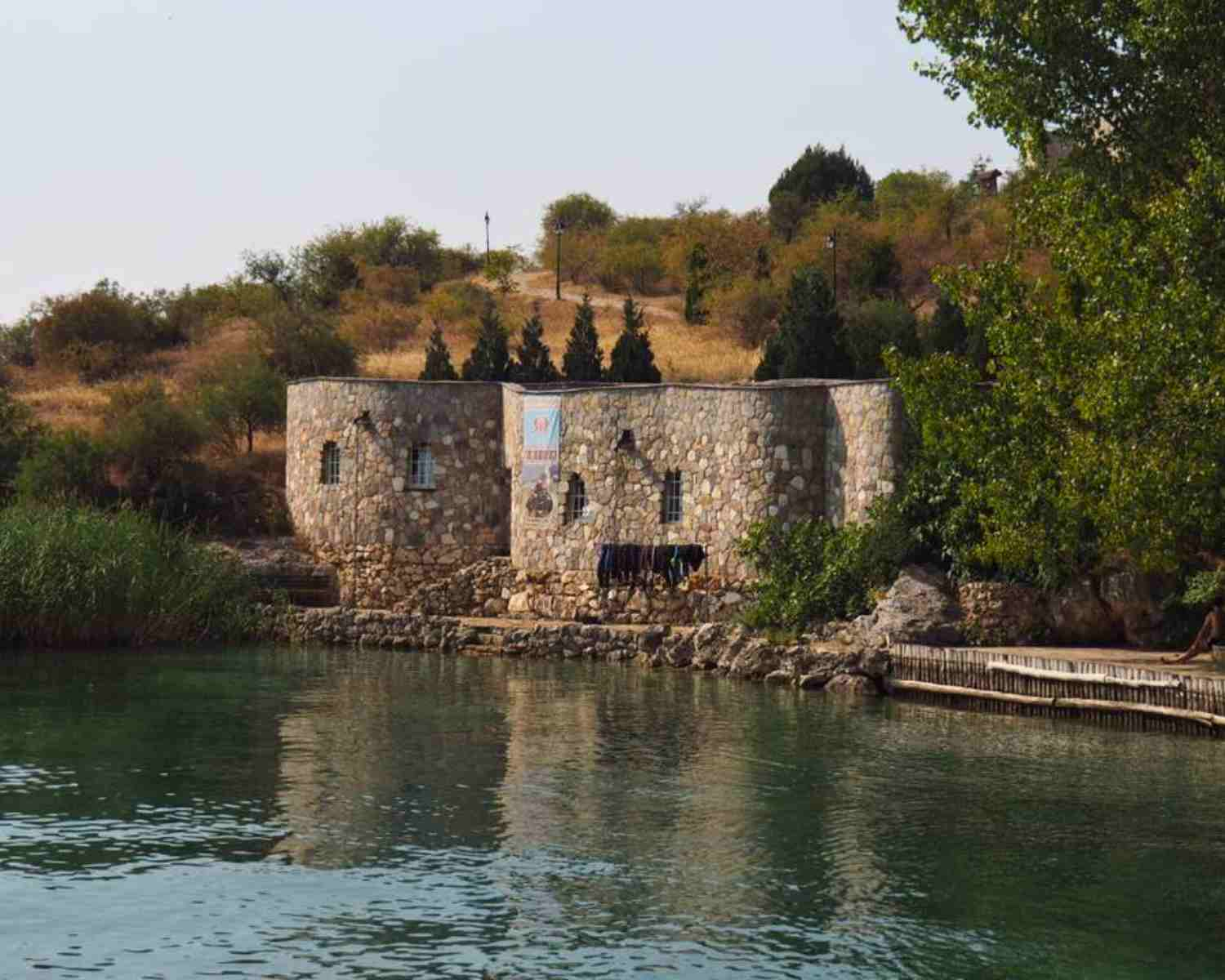
The site also houses a museum that showcases artifacts recovered from Lake Ohrid and its surrounding area. These artifacts include a range of objects, including pottery, jewellery, tools, and weapons, providing visitors with a deeper understanding of the region’s history and the daily lives of its ancient inhabitants.
The Bay of Bones is not only an archaeological site but also a cultural and educational centre. It serves as a popular tourist attraction, offering guided tours, educational programs, and various events that promote the preservation and understanding of the cultural heritage of the Ohrid region.

Both Sunshine and Striker found the site fascinating and we explored it for over an hour.
How to Get to the Bay of Bones from Ohrid
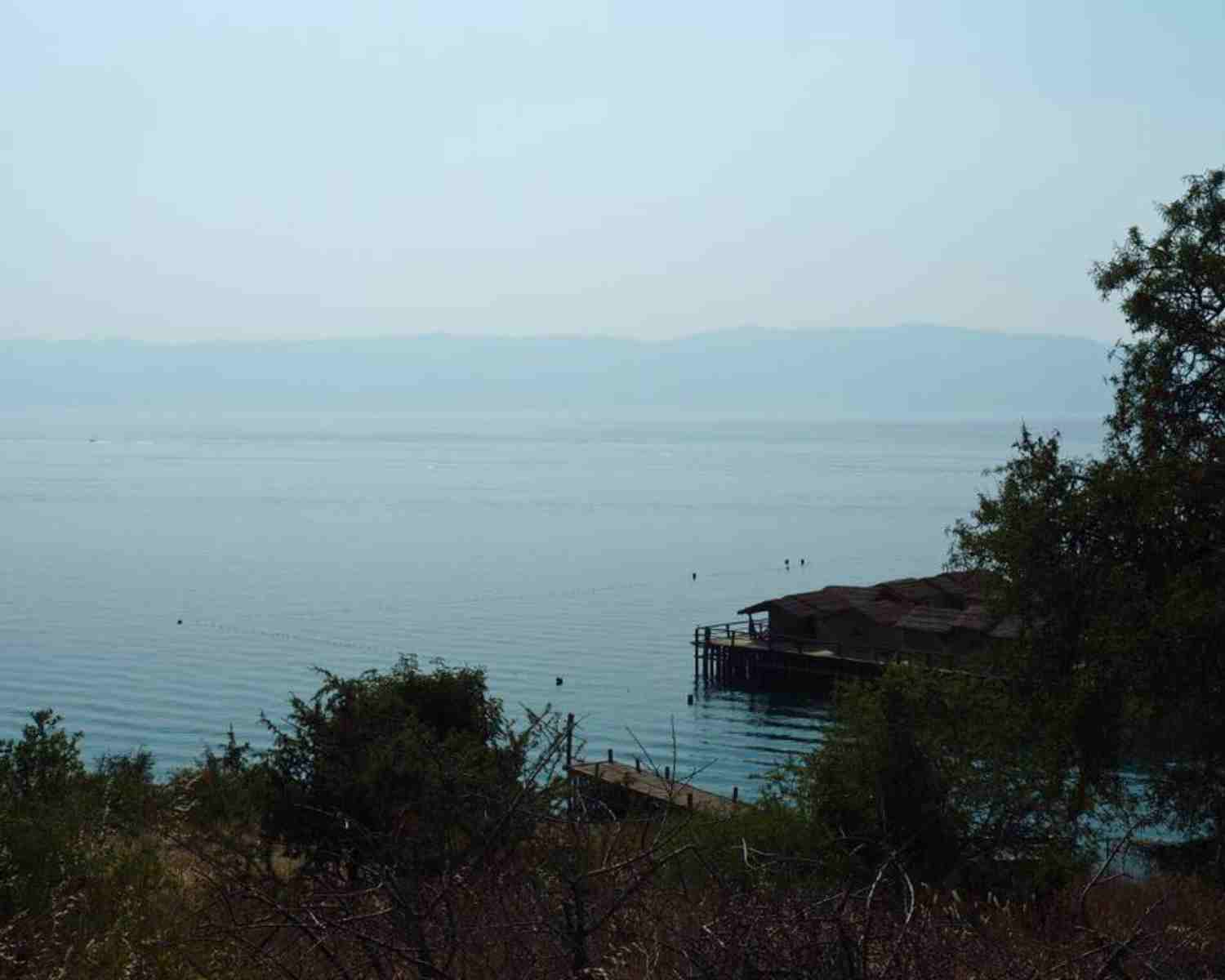
Getting to the Bay of Bones is pretty straightforward. On our trip, we hired a taxi for a few euros with the promise that they would also take us back to Ohrid afterwards. As both Sunshine and Striker can understand Macedonian, this may have been why it was so easy, but I think it will be for you as well.
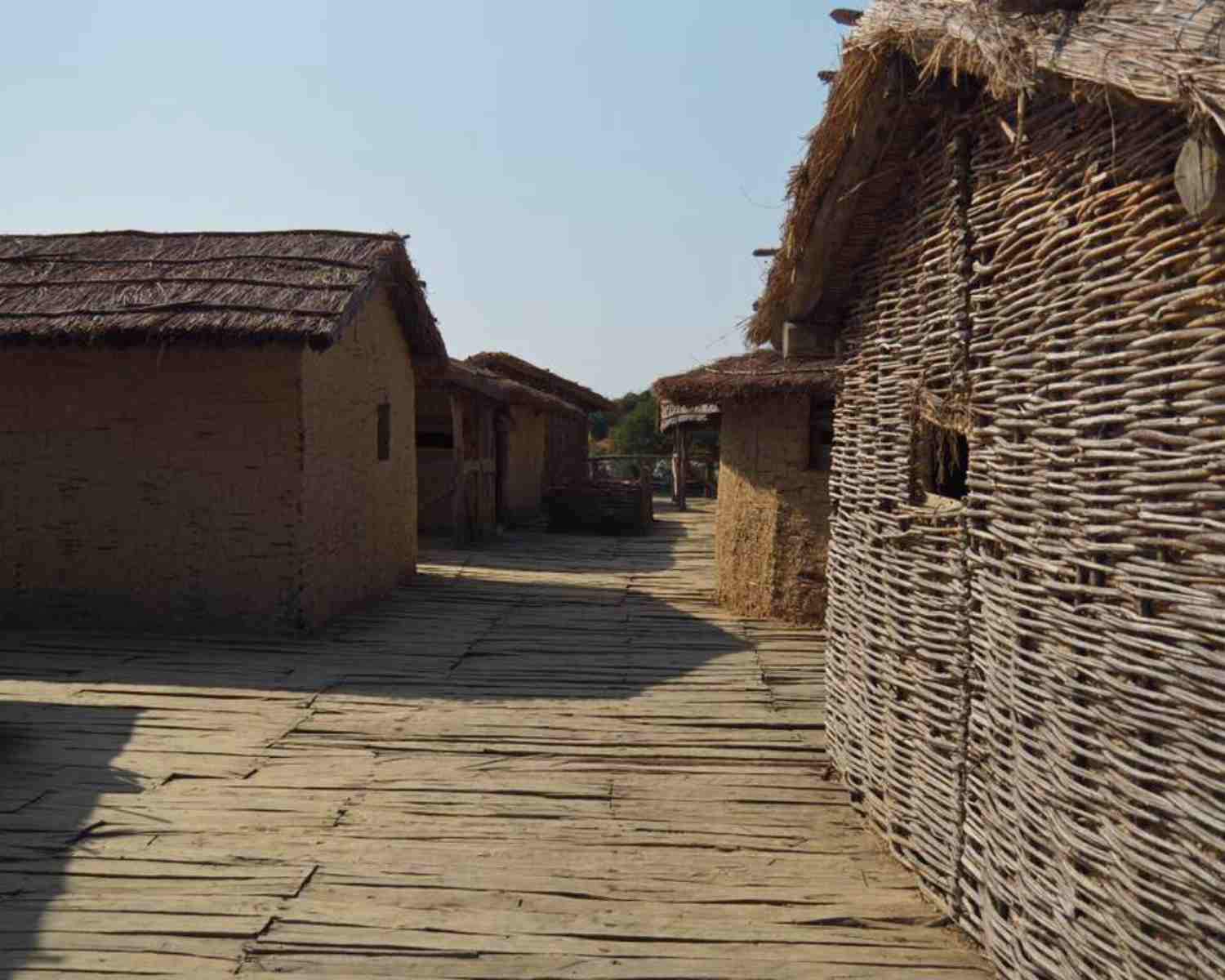
By Car
The most convenient way to reach the Bay of Bones is by car, either one you have rented for your Macedonian tripr or a taxi.
The distance between Ohrid and the Bay of Bones is approximately 14 kilometres (8.7 miles), and the journey takes around 20 minutes, depending on traffic conditions. Follow the signs towards Trpejca, and you’ll reach the Bay of Bones, which is located just before the village of Trpejca.
By Public Bus
Public buses also operate between Ohrid and the Bay of Bones. You can check the local bus schedules and routes to find a suitable option.
Buses depart from the Ohrid Bus Station, and the journey takes around 30 minutes. However, keep in mind that bus schedules may vary, so it’s advisable to check the latest information beforehand.
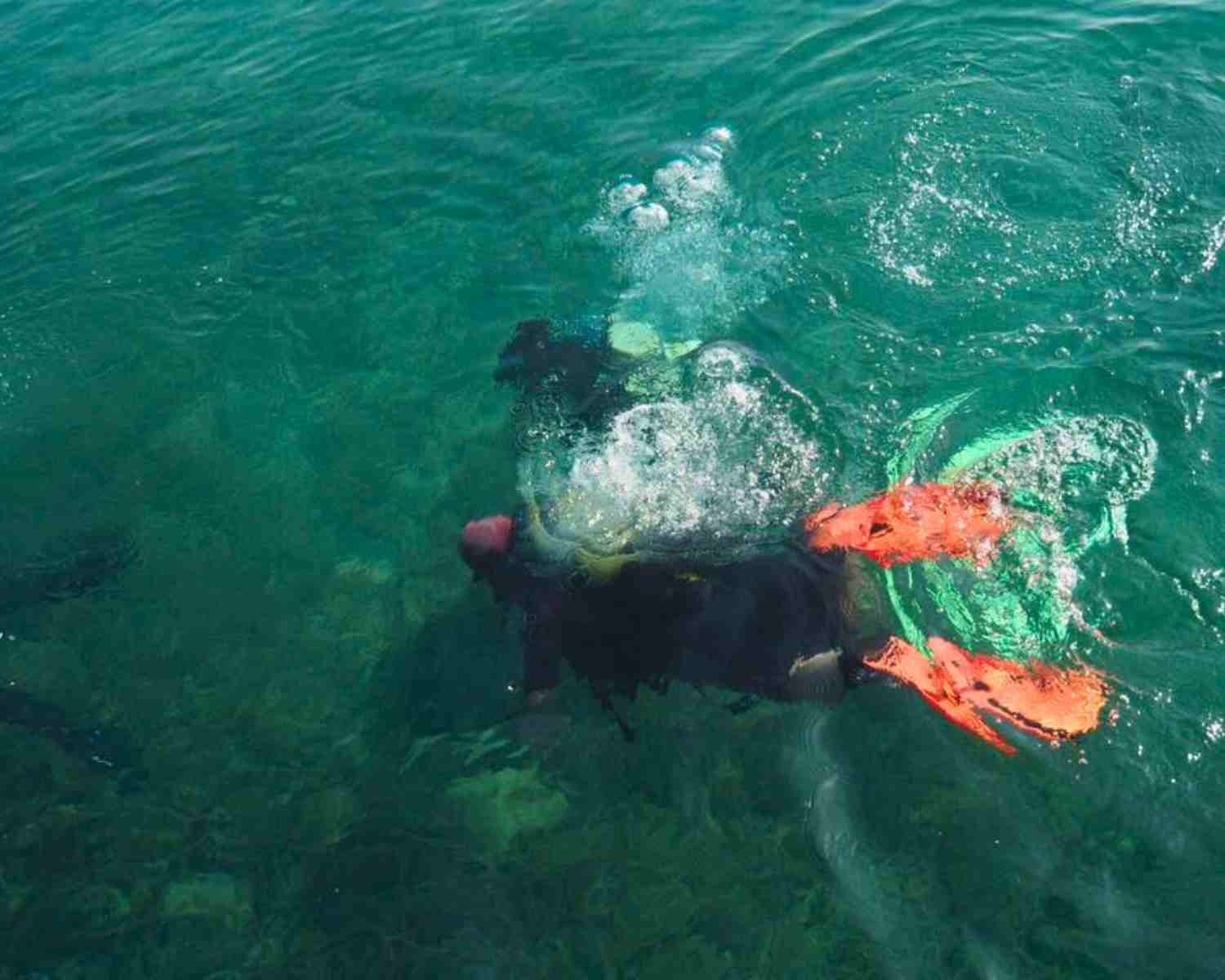
By Boat
Another scenic way to reach the Bay of Bones is by taking a boat from Ohrid. During the tourist season, boat tours and excursions operate on Lake Ohrid, including trips to the Bay of Bones.
This is likely to be the most expensive option! You can inquire about boat tours at the Ohrid waterfront or through local tour operators.

